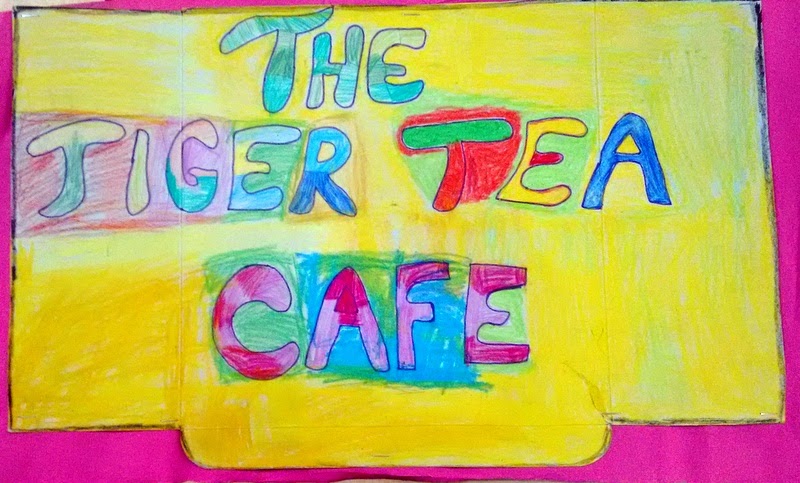Students who learn through telling and reflectively processing their stories develop skills that enable them to link subjective and objective perspectives, capture the complexity of experience and bring about thoughtful change to self and practice.
When storytelling is used as a robust mode of inquiry, student learning is enhanced in multiple ways.
Stories bring learning to life in early years. A head teacher said: “I realized that this is truly inclusive learning – the impact is as significant on the gifted and talented as it is on reluctant and disengaged children – they all achieved together.”
Meaningful storytelling processes and activities incorporate opportunities for reflective dialogue, foster collaborative endeavor, nurture the spirit of inquiry and contribute to the construction of new knowledge. In addition, cultural, contextual and emotional realities can be acknowledged, valued and integrated into storytelling processes.
 Last two weeks early year classes of 'Earth House Alternative School' were learning in an interactive way using the theme from famous story 'The Tiger Who Came To Tea'
Last two weeks early year classes of 'Earth House Alternative School' were learning in an interactive way using the theme from famous story 'The Tiger Who Came To Tea'The Tiger Who Came to Tea is a short children's story, first published in 1968, written and illustrated by Judith Kerr. The book concerns a girl called Sophie, her mother, and an anthropomorphism tiger who interrupts their afternoon tea.
We visited to a nearby bakery and coffee shop to link up our story to our 'tea party' which helped us integrated many objectives together.
Then next week we arranged a 'tea party' where children made the cake, sandwiches and tea and served to the guest. Guests were the parents and our middle and high school students who enjoyed the early years students welcoming them.
Children prepared menu cards and gave them to the guests/customers. A table was prepared as it was a bakery shop. Cakes, sandwiches and tea were served in a very good manner.
Teachers tried to create a classroom atmosphere where children forgot they don’t like school/work/literacy/numeracy and instead participating in each and every activity very warmly. It was a cross-curricular creative project, where children used role play, art, movement to develop more confidence in reading, listening, retelling, writing.
Cross curriculum links with the story 'The Tiger Who Came To Tea':
Literacy: Link up with the vocabulary used in story such as tea, teapot, tiger, tap, sandwich etc and to blend words starting with phonemes ‘ch’ ‘sh’ ‘th. To use writing to communicate in a variety of ways, incorporating it into play and everyday classroom life, e.g. recounting their own experiences, lists, signs, directions, menus, labels, greeting cards, letters. Use of the words 'big', 'furry' and 'stripy' to describe the tiger.
Imagine if a tiger came to tea at your house. How would your family react if a tiger wanted to come to tea?
How would you behave? Could you write a story about this?
What are the characters thinking / saying?
Watching YouTube video about the story.
Listening to a retelling of the story from different age group children.
Maths: Create a shopping list showing all of the things that Sophie's family needed to buy to replace the things that the tiger ate.
Making a menu of a bakery or coffee shop.
Science: Find out what tigers like to eat. Can you create a food chain that includes a tiger? Look at the tiger's stripes.
Make a menu of tasty food that Sophie's family can choose from at the cafe.
Role play: When we are young, we learn by mimicking, playing, and experimentation. As our language skills develop and formal schooling starts, these strategies are replaced by language-based learning, which can dampen our curiosity and motivation to learn. Roleplay simulation aims to revive the ease and joy of experiential learning. We used the 'role playing' method in our 'tea party' mimicking 'bakery or coffee shop'.
After the preparation of food and decorating our early year classroom, we asked students to demonstrate the social skills they learned at their visit to bakery shop. And it was amazing to see the children welcoming guests, giving them the menus, serving the food etc.
Design/Technology: Designing and creating masks, teapot formats, stripy tiger coloring etc.
 |
| Banner prepared for tea party by early year students |
 |
| Creation of cards, masks for tea party |
 |
| A picture of the bakery shop we visited last week |
 |
| Bulletin Board |
 |
| Different work sheets prepared by early year students |
 |
| Our early years bakery shop |
 |
| Preparation of food for coming guests |
 |
| Now table is ready to serve for customers |
 |
| Bakery shop is ready |
 |
| A very warm view of our early year tea party |
Art: Notice the patterns on the clothing in the illustrations.
Painted the picture of the tiger's stripes.
Created masks for each character to help you perform the story inside the classroom.
Personal, social and health education: The tiger wasn't very polite when he ate all of Sophie's food. Should we do as tiger did? What manners of visiting other's home we know as Muslims?
Can you think of some manners that we should need to remember when we visits someone else's house?
 |
| Bakery shop keeper enjoying the tea party |















No comments:
Post a Comment